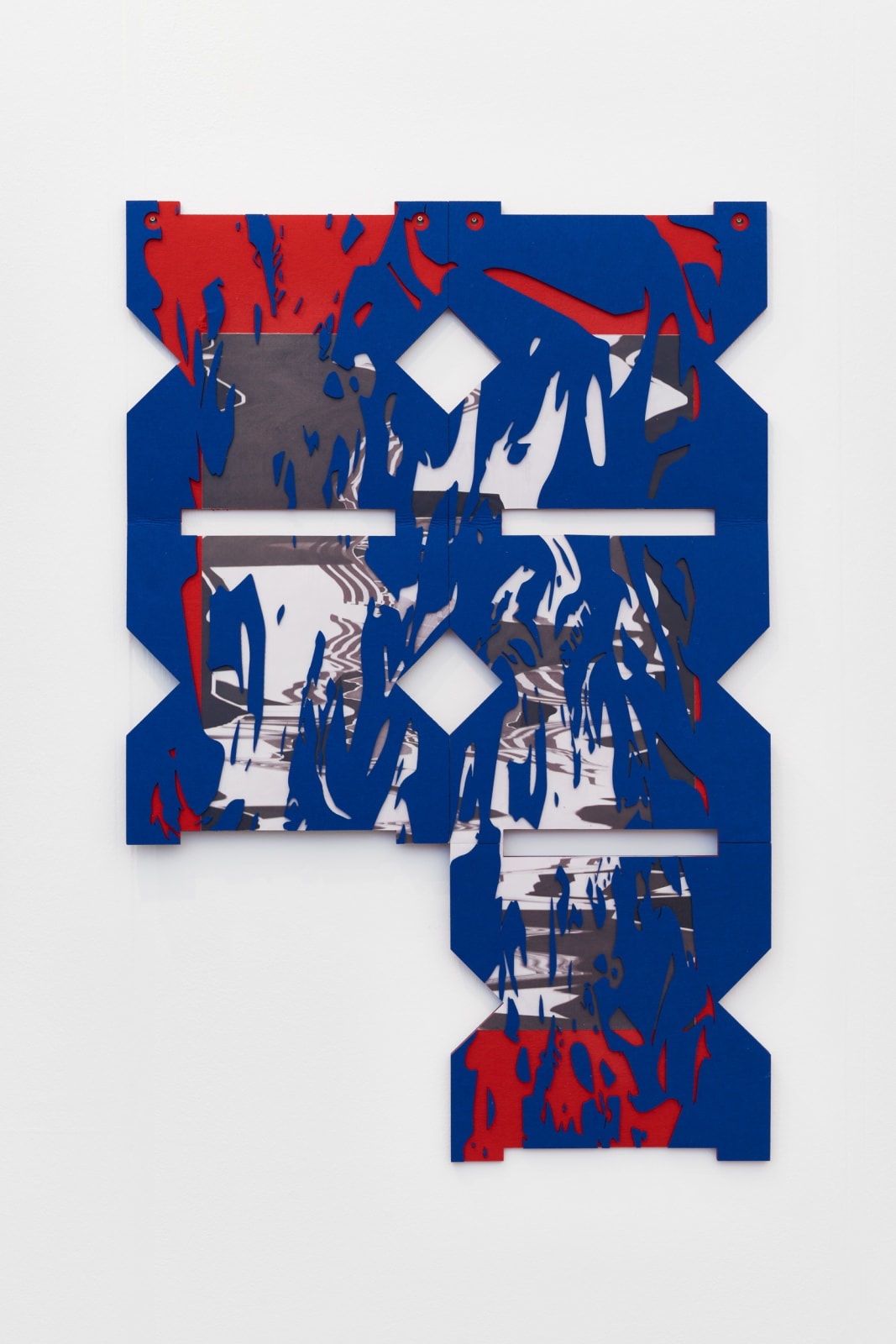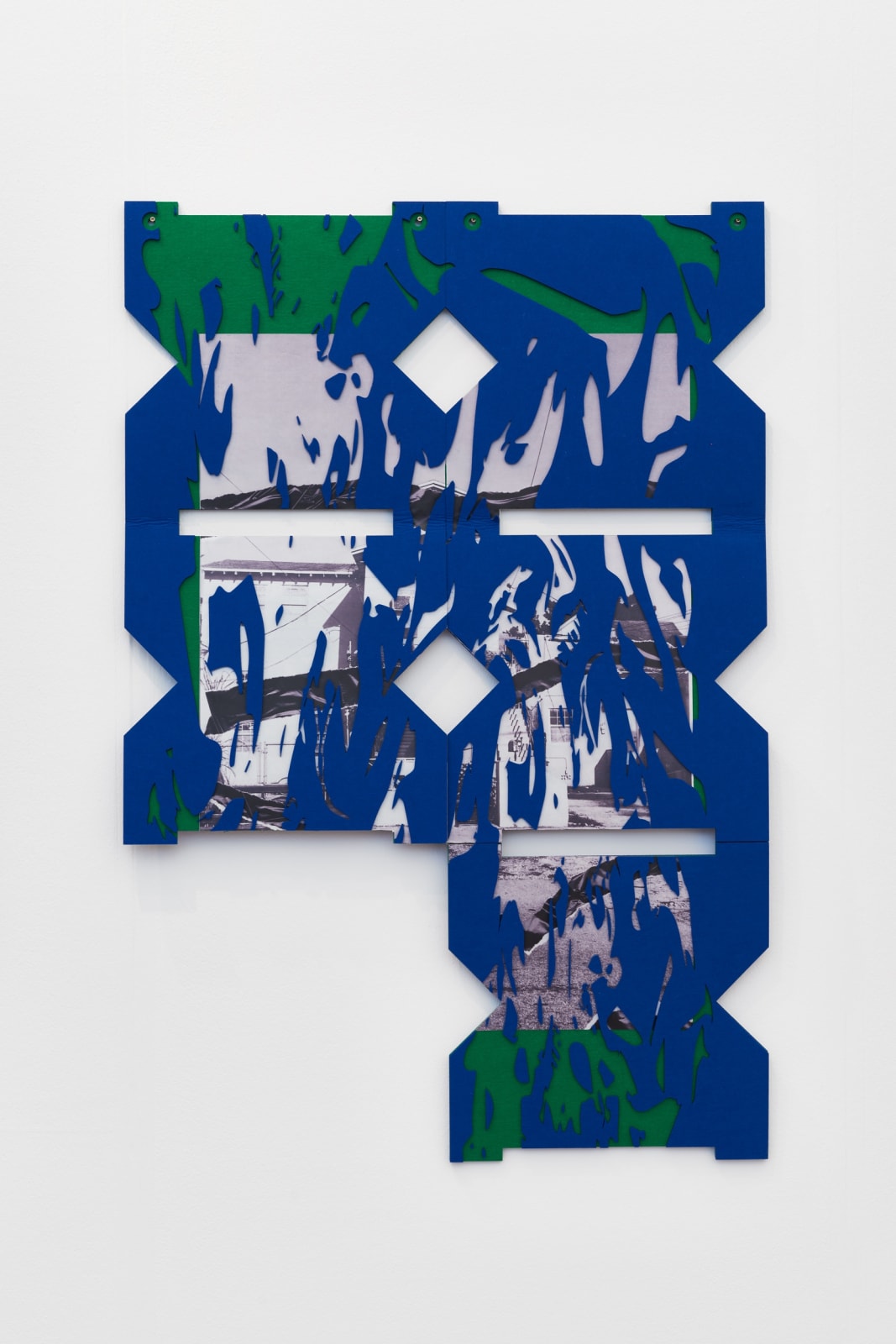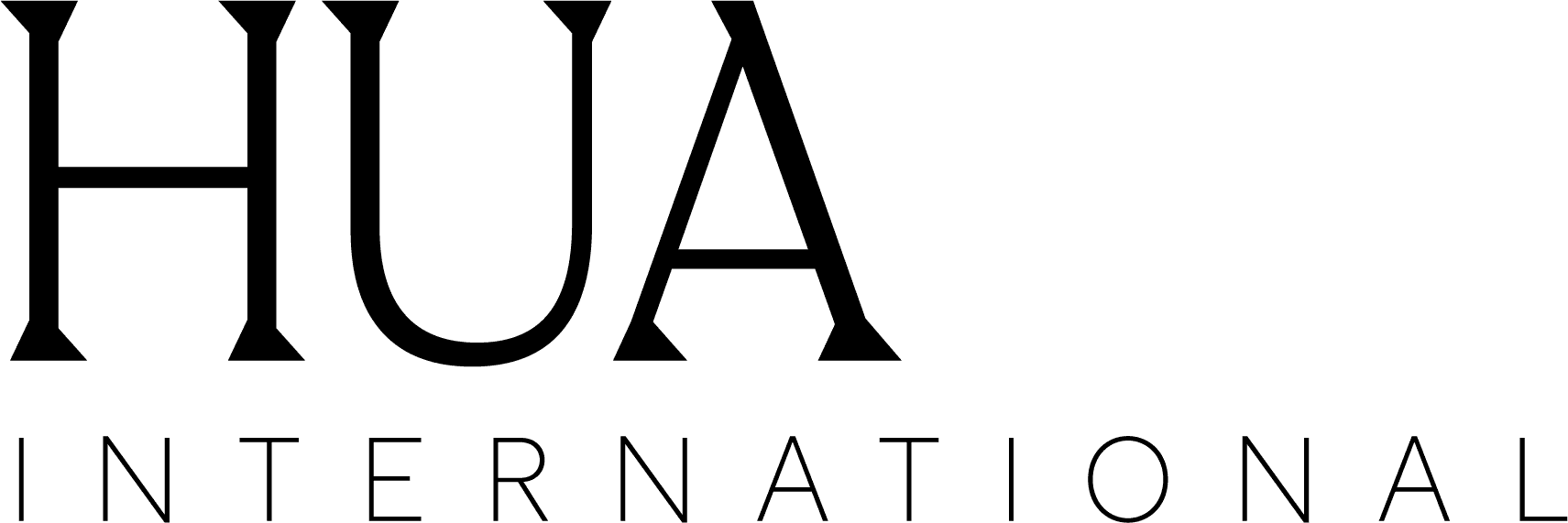FRIEZE LONDON2022: Social Factory ( Chair Chorus ) | BOOTH H26
For Frieze Focus 2022, Rafael Domenech has created an installation Social Factory (Chair Chorus) that radically empowers visitors with the agency to carry a message and become authors, readers, furniture makers,painting contemplators and workers when they enter this ever-changing field of artworks;turning the fair booth from a cite of passive reception of consumption into an active site of production.Made from 12 black and white photo collages, each work is composed of three modular plywood squares and one square laser-cut felt that appears to be only two things– a chair and a cushion. The work is triangulated between the radical art object, functional (teaching) device and the pictorial language of painting.
Upon closer inspection,several layers of reading unfold as the cushion becomes an“artist book”containing the words“Blossom,Stones,Square,Message”which can unfold vertically into a bright cobalt blue fiber- photomontage painting. The word “Blossom’’ acts as a verb describing the opening and closing of the objects, while “Stones” refers to ideas inspired by Robert Smithson, namely that a piece of earth can be the index of a place.“Square”is a nod to the shape of the work and the history of the grid in minimalism, whereas“Message” recounts the artist’s fascination with“The Medium is the Massage”, a canonical text on media theory by Marshall McLuhan,but more importantly,points to the artwork (unlike static painting) taking on the agency to make a change by carrying information to the people as anti-propaganda.
Black and white images were taken in multiple cities, places where local vernacular encounters the globalized world, what Domenech calls “cites on the edge of cities, where all the real action happens”, such as porn shops or pawn shops,revealing artist’s longstanding interest in architecture,urban planning, modes of material production, and adaptive construction. Thus each“chair ”has a camouflage function, it is also a critique of traditional art institutions instead, it becomes a framework for pedagogical and participatory protocols with all of us as collaborators. Working on the level of networks and systems art not simply the heuristic of metaphor we all embody the worker in crisis in part inspired by the theorist Mario Tronti whose text Factory and Society (1962) built on ideas of autonomist Marxism and how spheres of production have spread from the factories too society as a whole. The work is putting us work in the Social Factory, posits making as an act of gathering and viewing as a form of labor.
These works arise from the lineage of the avant-garde high modernists who invented abstraction,collage, Dada,Futurism,and the idea of the ready-made or found object all of whose goal was to destroy traditional subject-object relationships. This continues in Domenech whose work enables the participation of the viewer not simply as a meaning maker but also as a laborer of production, empowering the viewers to go from passive to active —inspired by Kurt Schwitters and others, who assembled driftwood, stones, and newspaper scraps that aimed to bring art and life together registering new forms of experience both narrative and pictorial. It is the participatory nature of the work that speaks to it also being a publication — the whole project is a publication unfolding in space.
All of Rafael Domenech’s work deals with and uses the mode of collapsing, making all of the pieces come apart and crunch down to the smallest possible units. Collapse is also a metaphor for the artist fleeing Cuba when it was necessary to make moving his personal possessions across borders as easy as possible. Like other Latin American artists using color as code, fleeing and exile are the fascination with collapse and making objects mobile. This interest is flattened into the plane of minimalist photography,which the artist sees as a“colonial project”over which bright colors are layered,recalling Latin American movements, including Neo-Concrete or Tropicala and the work of artists Hélio Oiticica, Lygia Clark, Carmen Herrera. When we leave the universalized “homeland”, our own commodification is all we have. As Domenech has stated,“Everything I own is my capacity to work”.
Currently on view at an ongoing exhibition in Richmond Virginia at the ICA VCU, Pittsburg at the 58th Carnegie International, in Mexico City at Lago Algo and will open in Brest, France at CAC Passerelle on October 13, 2022.














